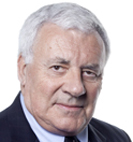Every time investment markets hit a new “crisis”, the experts have a different explanation but, in reviewing my self-managed superannuation fund (SMSF), I try not to worry about the alleged cause of the latest troubles. Rather, I make sure I’m sticking to my original investment strategy. (You remember, that’s the document you are supposed to consider each year in your annual return.)
SMSF portfolios need a long-term strategy as well as a shorter- term tactical approach. If you get the main strategy right, it acts as a template for tactical adjustments. If your strategy isn’t well based, you’re likely to be over-whelmed by short-term tactical considerations.
My stance on investing – it’s stretching things to call it a philosophy – has been shaped by my own experiences, current investment conditions and by many famous investment thinkers I’ve interviewed.
My fund aims to get the best return (especially from franked dividends) while protecting my total retirement savings from catastrophic declines. Obviously, this is now more difficult with low commodity prices, interest rates and investment returns – and global investors estimating low, single digit returns for equities.
My starting point is to try to get the portfolio’s asset allocation right, before I worry about individual stocks. My asset allocation is roughly 60% equities and 40% cash or short-term investments. This might look like a fairly aggressive mix for someone well into their seventies but, until recently, it has produced income, which met the fund’s minimum pension payouts.
There’s now a nasty potential gap between the rising minimum payouts and current investment returns, but sticking to the fixed asset mix keeps me from increasing equities in search for higher returns and I now need to hold several years of pension payments in short-term investments.
Looking at the portfolio, I try to first focus on the overall asset mix rather than worry about the halving of the BHP holding’s book value. The reason: I’ve gradually cut back on resources holding (mainly BHP and Woodside). From over 10% two years ago I’ve let it slide to just over 5% by resisting the temptation to average down on these holdings.
Rather, I have averaged up elsewhere. I’ve become more confident about increasing my overseas exposure and using a “baby steps” approach, I have increased my infrastructure investments from just under 10% in 2013 to 17 % now (APA, Sydney Airport, Transurban and Macquarie Atlas).
Similarly, I first dipped my toe into international equities in early 2012 with an S&P 500 EFT (IVV). I’ve added to this several times since and also bought another international equity EFT (WXOZ). As a result, the overseas equities percentage has risen to about 13%. This now also includes a direct holding of US dollars via the EFT, USD.
I have maintained a lowish benchmark holding in banks and financials (including hybrids) of about 21%; income has to come from somewhere. On balance, I’m not unduly worried about the banks.
I’m light on property (held mainly through the ASX property index ETF) but recently topped up the Telstra holding (now about 9.5 %). The other large equity holdings are Wesfarmers, Woolworths and CSL.
I’ll remain bearish on resources, until there is a clear recovery in commodity prices. I don’t know when or why this will come; I’ll just concentrate on waiting to see it before I’m tempted to “bottom fish” BHP and other fallen leaders. I prefer to see what the market is saying rather than listening to the confusing babble of market commentators.
Finally, with so many potential decisions looming, it’s tempting to try to anticipate government policy. I prefer to see the details before getting too flustered about possible policy changes in taxation, investment and superannuation, which may come over the months ahead.
Important: This content has been prepared without taking account of the objectives, financial situation or needs of any particular individual. It does not constitute formal advice. Consider the appropriateness of the information in regards to your circumstances.

